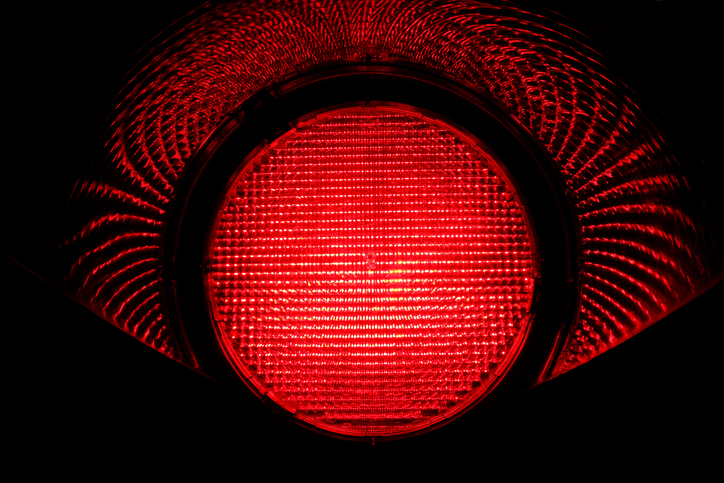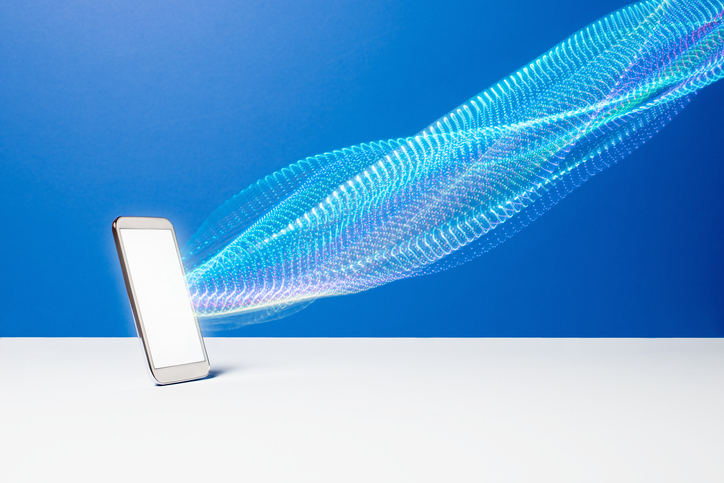Why “Seeing Red” Is Sometimes The Best

By Joy Stephenson-Laws, J.D., Founder
Thanks to the invention of light bulbs in the late 19th century, today most of us do not worry about having access to light when it is dark outside. During the night or before the sun rises, we can easily drive, cook, read and really do anything that “back in the day” would have been a lot more challenging. Imagine if we still had to light our homes with candles?!
I will say, however, that people who lived “back in the day” and did not have access to sources of artificial light and all of the technology that we do, probably had better melatonin production and maybe even better sleep quality.
We really underestimate how exposure to certain types of light may impact our sleep, mood and overall health. We, afterall, already have so much on our plates and so much to think about. Now we have to think about light, seriously? You may think light is light, but there is so much more to it than that. Before we get into that, let’s do a brief crash course on light.

Visible light is a kind of electromagnetic (EM) radiation. Other types of EM radiation include radio waves, infrared radiation, ultraviolet radiation, X-rays and microwaves. These different forms of radiation have varying wavelengths. The longer the wavelength, the lower the energy. The shorter the wavelength, the higher the energy. For example, X-rays have shorter wavelengths and higher energy.
“Visible light waves are the only wavelengths of the electromagnetic spectrum that humans can see,” reports National Geographic.
“The different wavelengths of visible light are seen as the colors of the rainbow: red, orange, yellow, green, blue, indigo, and violet. The longest wavelengths (around 700 nanometers) are red and the shortest wavelengths (380 nanometers) are violet.”
Sunlight is the main source of natural blue light (short wavelength, high energy). Think of blue light as your “wake up and go” type of light. Blue light is important for mental alertness and performance. If coffee were a light, blue light would be it. This type of light tells our bodies to stop producing melatonin (the sleep hormone that our bodies produce).
Artificial Blue Light.
After the sun has set and it gets dark outside, we don’t really need blue light for the purpose of regulating our circadian rhythm (the inner 24-hour cycle that governs literally all our bodily functions from when we get up and go to sleep, when our metabolism is most active and when various organ systems work at their peak efficiency). Melatonin responds to darkness. When it gets dark outside, our brain receives the signal to start producing melatonin.
However, most of us are exposed to a lot of blue light once it is dark outside through smart phones, computers, tablets, televisions, LED (light emitting diode) lights and fluorescent lights. As a result, the brain can miss the message to start producing sufficient melatonin when it’s bedtime. Hello potential insomnia and sleep issues!
“Until the advent of artificial lighting, the sun was the major source of lighting, and people spent their evenings in (relative) darkness. Now, in much of the world, evenings are illuminated, and we take our easy access to all those lumens pretty much for granted,” reports Harvard Medical School.
“But we may be paying a price for basking in all that light. At night, light throws the body's biological clock—the circadian rhythm—out of whack. Sleep suffers. Worse, research shows that it may contribute to the causation of cancer, diabetes, heart disease, and obesity.”
Red Light.
Unless you are super strict about shutting down all electronic devices and keeping your house very dark as soon as it is dark outside, it’s pretty unrealistic to not expose yourself to some degree of blue light (as well as white light which is also higher energy and disruptive to melatonin production) during the hours that your body doesn’t need it. This doesn’t mean that we cannot minimize the exposure.
Red light, which has a longer wavelength and lower energy, may be just the solution some of us need for certain nocturnal needs.
A study from 2013 involving hamsters conducted by researchers at Ohio State University and published in the Journal of Neuroscience found evidence suggesting that blue light had the worst effects on “mood-related measures” (followed by white light).
“But hamsters exposed to red light at night had significantly less evidence of depressive-like symptoms and changes in the brain linked to depression, compared to those that experienced blue or white light,” according to the study report from Ohio State.
“The only hamsters that fared better than those exposed to red light were those that had total darkness at night.”
So not only do blue and white light suppress melatonin production, but they also may contribute to depression if overexposed to them. A lack of sufficient quality sleep may also contribute to depressive symptoms, weight gain, wreak havoc on the immune system and more.
If you are someone who sleeps in total darkness throughout the night, that’s great and consider yourself very fortunate. Not everyone, however, has this privilege. For example, some people work night shifts or already suffer from insomnia. And think about new parents. Newborns have to feed every couple of hours throughout the night. Of course, this cannot be executed in total darkness.
The solution may be red light.
When feasible, consider using red lights. This is not just a light that is tinted red. You need a red light with red light wavelengths (like this one). Also consider this amber book light and this red light for nurseries, travel and more.
Just to really put into perspective the effect certain types of light can have on us, “[h]amsters that spent the night in dim blue or white light had a significantly reduced density of dendritic spines compared to those that lived in total darkness or that were exposed to only red light. Dendritic spines are hairlike growths on brain cells that are used to send chemical messages from one cell to another. A lowered density of these dendritic spines has been linked to depression, Nelson [one of the researchers and co-authors of the study] said,” according to the report from Ohio State.
Additional ways to reduce exposure to blue and white light at night.
- Consider ditching your smartphone. I know this is hard to do, but the 24/7 attachment we have to our smartphones is really unhealthy. Wouldn’t it be nice to have an evening free of emails and scrolling social media? I know it can be hard to set work boundaries and not see what’s happening on Facebook or Instagram, but imagine how nice it would be to have evenings that are focused on meditation, family, reading or taking a relaxing bath. If you have to be on your phone, look into getting a blue light filter for your phone.
- If you have to be on your computer, look into blue light filter apps.
- There are also blue light blocking goggles and glasses.
- Keep your house dim. When the sun starts to set, get into the habit of turning off as many lights as possible in your home. We tend to take for granted the fact that we even have lights and tend to leave so many of them on. Try to be more conservative with your lighting. Use small lamps and lights that you can dim.
- Watch less television in the evening. If you are someone that has a TV in the bedroom or needs TV to fall asleep, try your best to break this habit and remove the TV from the bedroom.
For more information on how you can improve your sleep quality and quantity, check out these pH Labs blogs. And for mental health, click here.
Enjoy your healthy life!
Disclaimer: This article is not intended to provide medical advice. Please consult with your doctor or another competent healthcare practitioner to get specific medical advice for your situation.
The pH professional health care team includes recognized experts from a variety of health care and related disciplines, including physicians, attorneys, nutritionists, nurses and certified fitness instructors. This team also includes the members of the pH Medical Advisory Board, which constantly monitors all pH programs, products and services. To learn more about the pH Medical Advisory Board, click here.







